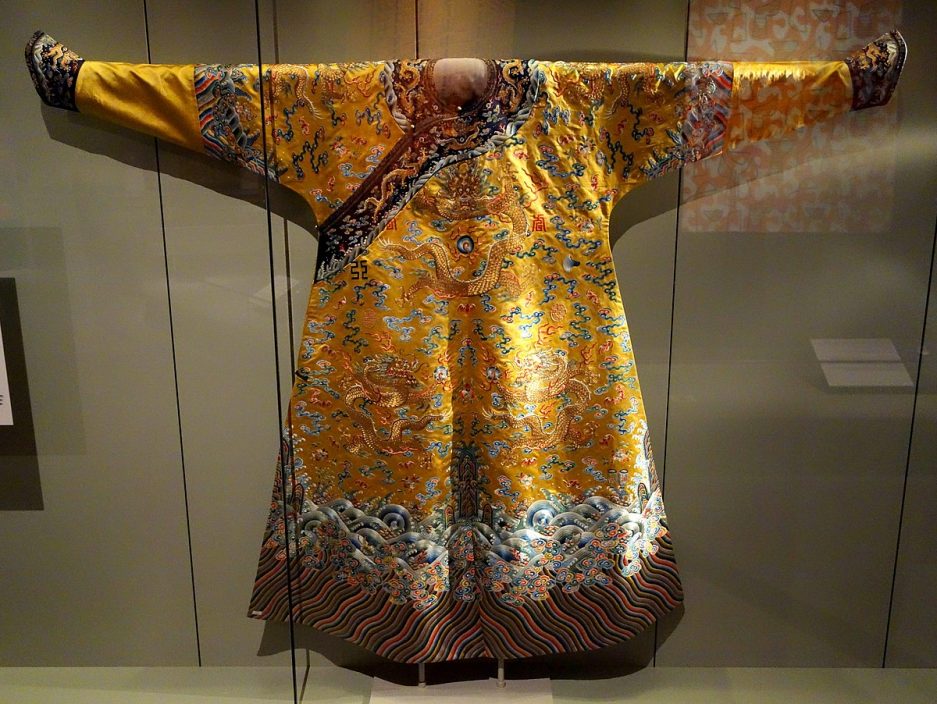Silk, the epitome of luxury, originated in ancient China around 3630 BCE. Crafted from the exquisite cocoons of silkworms, it quickly became a symbol of opulence and refinement in the fashion world. Chinese emperors adored it, not only wearing it but also sleeping in its lavish embrace.
The story of how silk fabric was born is associated with the discovery of silk production through sericulture. Here's a brief overview of the legendary origin of silk fabric:
The Legend of Empress Leizu: According to Chinese legend, the origin of silk can be traced back to Empress Leizu (also known as Xi Ling Shi). The legend tells of her discovery of silk when a cocoon from a silkworm fell into her tea.

Sericulture: Empress Leizu is said to have observed that the cocoon was made from a thread that could be unraveled. She then developed the technique of sericulture, which involves raising silkworms, feeding them mulberry leaves, and harvesting their silk-producing cocoons. This process marked the birth of silk production.

Early Silk Production: Over time, the Chinese people refined the process of silk production. They learned how to cultivate mulberry trees for silkworm food and carefully unwind the delicate silk threads from the cocoons.
Silk as a Secret: The Chinese kept the process of silk production a closely guarded secret. The knowledge was passed down through generations, and silk became highly prized and associated with royalty and luxury. The Chinese were able to maintain a monopoly on silk production for many centuries.
Silk's Royal Journey
Initially, silk was a closely guarded secret, exclusively reserved for the Chinese Emperor and his inner circle. The Emperor wore white silk within his palace and donned yellow silk when venturing outside. However, over time, these restrictions loosened, and more people embraced the elegance of silk in their clothing and decor.
The Language of Silk
Silk became so ingrained in Chinese culture that it even influenced their language. To this day, over 200 of the most commonly used Mandarin characters have "silk" as a central theme, a testament to its cultural significance.
The Legendary Silk Road
Eventually, knowledge of silk production spread along the famous Silk Road, a network of trade routes that connected China to the Western world. Silk wast was a catalyst for the Silk Road, a vast trade network connecting East Asia to Europe, India, and Africa This facilitated the exchange of not only silk but also ideas, cultures, and goods. It was used for more than clothing, finding its way into fans, banners, fishing lines, and even musical instruments. The exchange of silk along this route facilitated the spread of ideas, languages, and cultural practices in both directions.
Silk fabric was born through the ancient Chinese discovery of sericulture, attributed to Empress Leizu. The process of raising silkworms, harvesting their silk threads, and weaving them into luxurious fabric became a cherished and closely guarded secret, leading to the development of one of the world's most prized textiles.

A Gateway to New Worlds
Silk also served as a gateway to new lands and ideas, connecting ancient empires and fostering cultural exchange. Explorers like Marco Polo and Christian missionaries ventured along the Silk Road, introducing novel foodstuffs and customs. Buddhism made its way from India to China, and from there, to Korea and Japan. Silk, once the symbol of China, became a bridge to a broader world of knowledge and discovery.
For a deeper exploration of this rich history, we recommend reading "The Silk Roads: A New History of the World" by Peter Frankopan.
